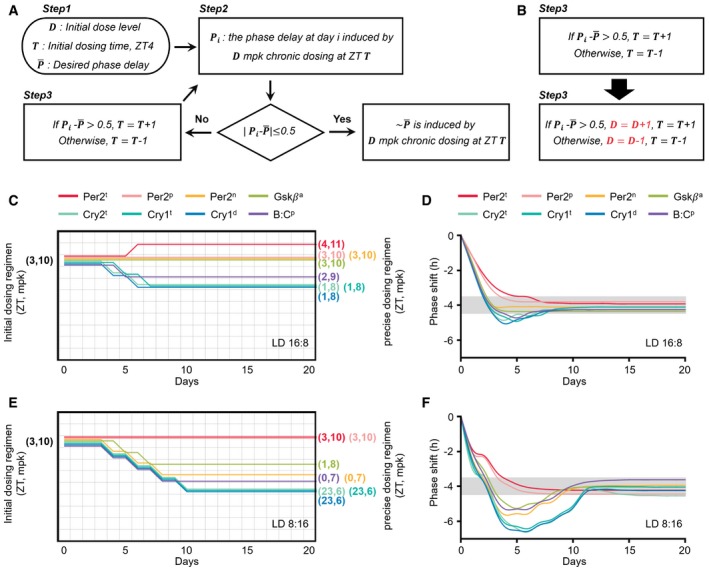Detailed diagram describing an adaptive chronotherapeutics which identifies a precise dosing regimen by solely adjusting dosing time.
Step 1: 10 mpk at ZT3 is recommended so that the following dosing time can be flexibly advanced or delayed depending on current drug effect with a low probability of leading to an accumulating or an alternating phase shift (Fig
EV4B–D).
Step 2: Single daily dosing is performed until a stable phase delay is observed (i.e., the phase delays at two consecutive days,
i−1 and
i, are similar,
< 0.2 h). However, if a larger phase delay than the desired one is achieved before the stable phase delay is obtained (i.e.,
> 0.5 h), the dosing is immediately stopped.
Step 3: Depending on the drug effect observed in
Step 2, the dosing regimen is modified (Fig
5A). If the induced phase delay is smaller than the desired phase delay (i.e.,
> 0.5 h), the dosing time is delayed by 1 h. Otherwise (
> 0.5 h), the dosing time is advanced by 1 h.
Step 2 and
Step 3 are repeated until a constant stable phase delay similar to the desired one (
0.5 h) is achieved.

